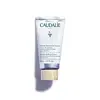What's inside
What's inside
 Key Ingredients
Key Ingredients

 Benefits
Benefits

 Concerns
Concerns

 Ingredients Side-by-side
Ingredients Side-by-side

Helichrysum Italicum Flower Water
Skin ConditioningGlycerin
HumectantEthylhexyl Stearate
EmollientPropanediol
Solvent1,2-Hexanediol
Skin ConditioningPolyglyceryl-3 Distearate
EmulsifyingCetearyl Alcohol
EmollientWater
Skin ConditioningPanthenol
Skin ConditioningSqualane
EmollientGluconolactone
Skin ConditioningCentella Asiatica Extract
CleansingHydrolyzed Hyaluronic Acid
HumectantSodium Hyaluronate
HumectantFicus Carica Fruit Extract
HumectantCeramide NP
Skin ConditioningHydrogenated Lecithin
EmulsifyingTocopherol
AntioxidantCichorium Intybus Root Extract
MaskingTremella Fuciformis Extract
HumectantLactobacillus/Soybean Ferment Extract
Skin ConditioningDioscorea Japonica Root Extract
Skin ConditioningAdenosine
Skin ConditioningGlyceryl Stearate
EmollientSodium Stearoyl Glutamate
CleansingButylene Glycol
HumectantDipropylene Glycol
HumectantGlyceryl Stearate Citrate
EmollientBrassica Oleracea Acephala Leaf Extract
HumectantUlmus Davidiana Root Extract
Skin ConditioningBeta-Glucan
Skin ConditioningHouttuynia Cordata Extract
Skin ConditioningDiamond Powder
AbrasiveAmaranthus Caudatus Seed Extract
Skin ConditioningEclipta Prostrata Leaf Extract
Skin ConditioningLaminaria Japonica Extract
Skin ProtectingGlycine
BufferingAspartic Acid
MaskingLeucine
Skin ConditioningAlanine
MaskingLysine
Skin ConditioningArginine
MaskingTyrosine
MaskingPhenylalanine
MaskingProline
Skin ConditioningValine
MaskingIsoleucine
Skin ConditioningHistidine
HumectantCysteine
AntioxidantMethionine
Skin ConditioningPalmitic Acid
EmollientStearic Acid
CleansingMyristic Acid
CleansingCaprylyl Glycol
EmollientEthylhexylglycerin
Skin ConditioningFructooligosaccharides
HumectantCarbomer
Emulsion StabilisingHelichrysum Italicum Flower Water, Glycerin, Ethylhexyl Stearate, Propanediol, 1,2-Hexanediol, Polyglyceryl-3 Distearate, Cetearyl Alcohol, Water, Panthenol, Squalane, Gluconolactone, Centella Asiatica Extract, Hydrolyzed Hyaluronic Acid, Sodium Hyaluronate, Ficus Carica Fruit Extract, Ceramide NP, Hydrogenated Lecithin, Tocopherol, Cichorium Intybus Root Extract, Tremella Fuciformis Extract, Lactobacillus/Soybean Ferment Extract, Dioscorea Japonica Root Extract, Adenosine, Glyceryl Stearate, Sodium Stearoyl Glutamate, Butylene Glycol, Dipropylene Glycol, Glyceryl Stearate Citrate, Brassica Oleracea Acephala Leaf Extract, Ulmus Davidiana Root Extract, Beta-Glucan, Houttuynia Cordata Extract, Diamond Powder, Amaranthus Caudatus Seed Extract, Eclipta Prostrata Leaf Extract, Laminaria Japonica Extract, Glycine, Aspartic Acid, Leucine, Alanine, Lysine, Arginine, Tyrosine, Phenylalanine, Proline, Valine, Isoleucine, Histidine, Cysteine, Methionine, Palmitic Acid, Stearic Acid, Myristic Acid, Caprylyl Glycol, Ethylhexylglycerin, Fructooligosaccharides, Carbomer
Water
Skin ConditioningHexyldecyl Stearate
EmollientCellulose
AbsorbentHydrogenated Jojoba Oil
AbrasiveGlycerin
HumectantVitis Vinifera Seed Oil
EmollientMel
EmollientC14-22 Alcohols
Emulsion StabilisingPotassium Cetyl Phosphate
EmulsifyingMyristyl Alcohol
EmollientSodium Acrylates Copolymer
Caprylyl Glycol
EmollientParfum
MaskingHydrogenated Polyisobutene
EmollientBenzyl Alcohol
PerfumingC12-20 Alkyl Glucoside
EmulsifyingXanthan Gum
EmulsifyingHelianthus Annuus Seed Oil
EmollientMyristyl Glucoside
CleansingButylene Glycol
HumectantPhospholipids
Skin ConditioningPolyglyceryl-10 Stearate
Skin ConditioningTocopherol
AntioxidantGlycyrrhiza Glabra Root Extract
BleachingDehydroacetic Acid
PreservativeBenzyl Benzoate
AntimicrobialHexyl Cinnamal
PerfumingLimonene
PerfumingLinalool
PerfumingWater, Hexyldecyl Stearate, Cellulose, Hydrogenated Jojoba Oil, Glycerin, Vitis Vinifera Seed Oil, Mel, C14-22 Alcohols, Potassium Cetyl Phosphate, Myristyl Alcohol, Sodium Acrylates Copolymer, Caprylyl Glycol, Parfum, Hydrogenated Polyisobutene, Benzyl Alcohol, C12-20 Alkyl Glucoside, Xanthan Gum, Helianthus Annuus Seed Oil, Myristyl Glucoside, Butylene Glycol, Phospholipids, Polyglyceryl-10 Stearate, Tocopherol, Glycyrrhiza Glabra Root Extract, Dehydroacetic Acid, Benzyl Benzoate, Hexyl Cinnamal, Limonene, Linalool
 Reviews
Reviews

Ingredients Explained
These ingredients are found in both products.
Ingredients higher up in an ingredient list are typically present in a larger amount.
Butylene Glycol (or BG) is used within cosmetic products for a few different reasons:
Overall, Butylene Glycol is a safe and well-rounded ingredient that works well with other ingredients.
Though this ingredient works well with most skin types, some people with sensitive skin may experience a reaction such as allergic rashes, closed comedones, or itchiness.
Learn more about Butylene GlycolCaprylyl Glycol is a humectant and emollient, meaning it attracts and preserves moisture.
It is a common ingredient in many products, especially those designed to hydrate skin. The primary benefits are retaining moisture, skin softening, and promoting a healthy skin barrier.
Though Caprylyl Glycol is an alcohol derived from fatty acids, it is not the kind that can dry out skin.
This ingredient is also used as a preservative to extend the life of products. It has slight antimicrobial properties.
Learn more about Caprylyl GlycolGlycerin is already naturally found in your skin. It helps moisturize and protect your skin.
A study from 2016 found glycerin to be more effective as a humectant than AHAs and hyaluronic acid.
As a humectant, it helps the skin stay hydrated by pulling moisture to your skin. The low molecular weight of glycerin allows it to pull moisture into the deeper layers of your skin.
Hydrated skin improves your skin barrier; Your skin barrier helps protect against irritants and bacteria.
Glycerin has also been found to have antimicrobial and antiviral properties. Due to these properties, glycerin is often used in wound and burn treatments.
In cosmetics, glycerin is usually derived from plants such as soybean or palm. However, it can also be sourced from animals, such as tallow or animal fat.
This ingredient is organic, colorless, odorless, and non-toxic.
Glycerin is the name for this ingredient in American English. British English uses Glycerol/Glycerine.
Learn more about GlycerinTocopherol (also known as Vitamin E) is a common antioxidant used to help protect the skin from free-radicals and strengthen the skin barrier. It's also fat soluble - this means our skin is great at absorbing it.
Vitamin E also helps keep your natural skin lipids healthy. Your lipid skin barrier naturally consists of lipids, ceramides, and fatty acids. Vitamin E offers extra protection for your skin’s lipid barrier, keeping your skin healthy and nourished.
Another benefit is a bit of UV protection. Vitamin E helps reduce the damage caused by UVB rays. (It should not replace your sunscreen). Combining it with Vitamin C can decrease sunburned cells and hyperpigmentation after UV exposure.
You might have noticed Vitamin E + C often paired together. This is because it is great at stabilizing Vitamin C. Using the two together helps increase the effectiveness of both ingredients.
There are often claims that Vitamin E can reduce/prevent scarring, but these claims haven't been confirmed by scientific research.
Learn more about TocopherolWater. It's the most common cosmetic ingredient of all. You'll usually see it at the top of ingredient lists, meaning that it makes up the largest part of the product.
So why is it so popular? Water most often acts as a solvent - this means that it helps dissolve other ingredients into the formulation.
You'll also recognize water as that liquid we all need to stay alive. If you see this, drink a glass of water. Stay hydrated!
Learn more about Water